Film Name: 哪吒之魔童降世 / Ne Zha
An animated film titled “Ne Zha” is steadily taking over social media feeds.
Thanks to scattered preview screenings nationwide and its outstanding early buzz, I couldn’t resist catching it myself—and after watching, I can excitedly declare: Though only halfway through 2019, this year’s best domestic animated film has already arrived. Directed by Jiaozi, creator of the acclaimed short “See Through,” this new feature looks poised to dominate the summer.
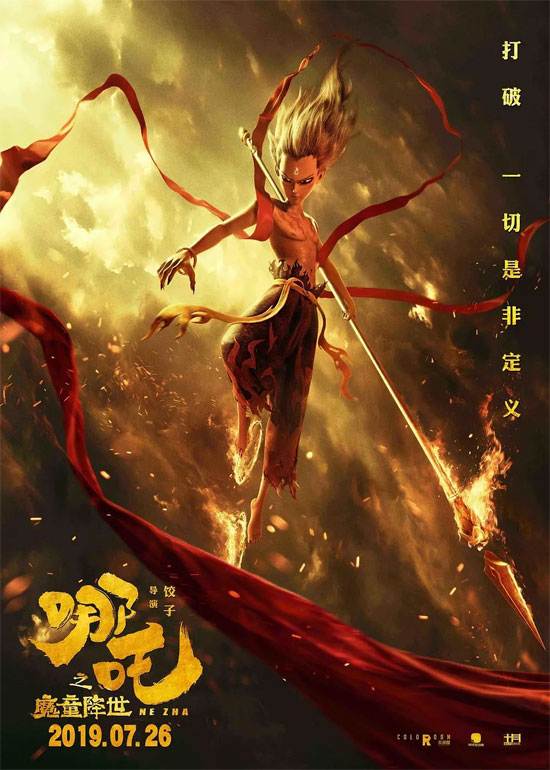
When it comes to outstanding domestic films, especially homegrown animations, I never hold back my applause and enthusiasm. I’m definitely a fanboy for this one~
Just as I was gearing up to promote this film with the same fervor I had when I watched “Monkey King: Hero is Back” ten times four years ago, I noticed a problem: “Ne Zha” doesn’t look particularly appealing. Its title, art style, character designs, and trailers seem to have deterred a large number of potential viewers.
Given this, I won’t approach this review in my usual style. Instead, I’ll analyze and recommend the film through a “Q&A” format. Once it officially releases next week, I’ll follow up with a full review to celebrate its arrival. Just wanted to give you a heads up.
[Friendly reminder: The following contains spoilers intended to spark and enhance your viewing interest. Please read at your discretion.]
Is the title a turn-off? Does it feel like something for toddlers?
Although domestic animation has seen significant improvements in production quality, subject matter, market reach, and industry environment in recent years, its overall reputation and treatment have not fundamentally changed. A vast majority of animations targeting young children remain the mainstream, while reimagined works like “Ne Zha” still struggle to gain favor.
For most people, the most iconic image of Nezha remains—and perhaps will forever remain—that from “Prince Nezha’s Triumph Against Dragon King,” a classic that has influenced generations.
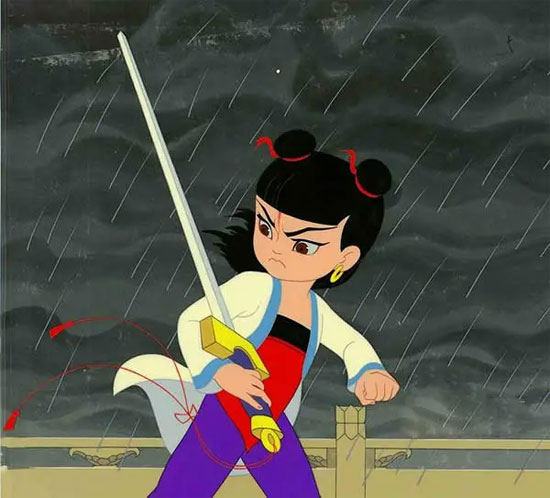
In fact, this 1979 classic was adapted from “The Canonization of the Gods” and folk legends, and it was the “re-creation” by Yan Dingxian, Wang Shuchen, and others that breathed new life into it. Subsequent adaptations like the 2003 animated version, the “Ten Cold” version, and the 2015 “Great Sage” version each brought their own unique characteristics to the character of Nezha.
Our historical myths, cultural customs, and regional characteristics are indeed profound and extensive. Yet the richness of traditional culture does not equate to the flourishing of popular culture. Traditional culture is the root, a vast reservoir of material. Only through continuous “re-creation” that aligns with the characteristics and aesthetics of the times can cultural IPs gain enduring vitality. (This principle explains why Disney abroad is keen on adaptations and remakes, and why domestic works based on “Journey to the West” and “Three Kingdoms” themes remain evergreen.) .
“Ne Zha” might sound like some knockoff third-rate production, but in terms of the film’s content itself, it’s actually quite fitting:
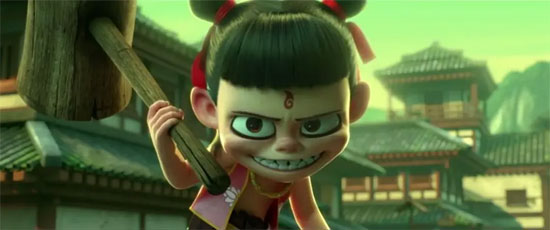
The primordial energies of heaven and earth gave birth to a colossal “Primordial Orb.” The Supreme Lord of the Beginning split it into the “Spirit Orb” and the “Demon Orb.” His disciple, the Great Unity Immortal, was tasked with implanting the Spirit Orb into Ne Zha, the son of Li Jing. However, through a series of mishaps, the Spirit Orb and Demon Orb were switched. Ne Zha, who should have been a hero with the Spirit Orb, instead became a demonic tyrant…
Beyond its foundational framework and core concepts, “Ne Zha” presents an entirely fresh anti-heroic, counter-mainstream fantasy narrative. Crucially, its resolution transcends mere rebellion—offering precisely the kind of novel storytelling today’s market craves.
Additionally, don’t be misled by promotional materials or your own preconceptions. This film isn’t overly “adult” nor is it simplistic for children. If rated under the American system, “Ne Zha” falls between PG and PG-13, making it suitable for audiences of all ages.

The film excels in many visual aspects: the mountain-hugging, sea-facing Chen Tang Pass; the majestic, self-contained Void Gate; the dark, hellish Dragon Palace—each setting possesses its own unique charm… The technical production is already quite mature, though I won’t elaborate further here as I’m not an expert.
Too ugly? Unappealing designs?
Beyond its “rustic” title, the most off-putting aspect of “Ne Zha” for audiences is likely its unconventional character designs. Many viewers have described Ne Zha’s appearance as ‘ugly’ or “unpleasant to look at”—after all, a short, mischievous brat with dark circles under his eyes isn’t exactly endearing.
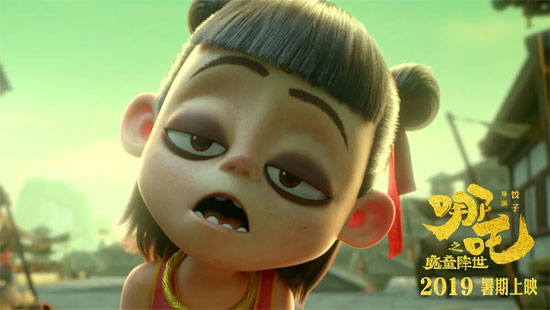
Whether this design is good or bad is debatable, but at the very least, we must acknowledge that these features align with Nezha’s characterization in the film.
In terms of character design, Nezha’s initial positioning is “evil, demonic, dark.” This core essence remains unchanged throughout his growth arc. Therefore, portraying him as a harmless, cute, or sunny-dispositioned character is absolutely unacceptable. Nezha must retain “negative” visual traits—at the very least, he cannot appear like a goody-two-shoes.
Numerous scenes and silhouettes in the film evoke the rare “cult animation” aesthetic seldom seen in domestic productions—rebellious, stifled, and brimming with pent-up rage. These emotional expressions are inextricably linked to Ne Zha’s foundational design.
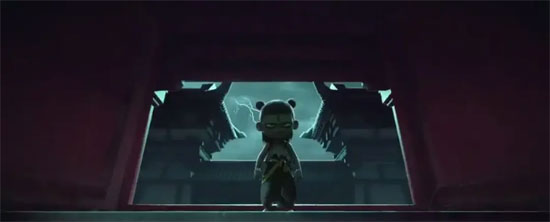
More importantly, judging Ne Zha solely by first impressions would be a grave mistake. The film holds far more than meets the eye between its initial presentation and its actual quality.
Even the diminutive, devilishly charming Ne Zha displays a rich palette of expressions and demeanors throughout the film. His aura and temperament shift dramatically across different settings and contexts—from innocent and carefree to hopeful and optimistic, from melancholy and despondent to hypocritical and duplicitous. He is far more complex than a simple label like “darkly charming and wildly eccentric” could ever capture.
Moreover, the film unveils two additional forms of Ne Zha during its climactic showdown—each one cooler than the last.

One is the “Rampage Form,” where he loses consciousness, while the other is the “Battle Form,” where he retains awareness and unlocks most of his power. Both promise entirely distinct viewing experiences.
Additionally, the character designs for other figures in “Ne Zha” are equally ingenious—more on that later.
What are the strengths/highlights of “Ne Zha”?
Overall, the finished film’s quality rivals (and even surpasses) typical Hollywood animated features. It lacks glaring weaknesses while boasting several standout strengths.
01. Memorable and Well-Grounded Characters
The success of supporting characters significantly impacts a work’s overall reception. What surprised me most about “Ne Zha” is that beyond the protagonist Ne Zha, nearly every supporting character possesses distinctive traits or impressions that stick with the audience—a rare achievement in a genre where supporting roles often feel stereotypical.
First and foremost are the master-disciple duo Taiyi Zhenren and Shen Gongbao.

From their very first appearance, these two established the classic dynamic of “No-Brainer and Grumpy,” the “one fat, one thin” pairing. Subsequent conflicts and plot developments naturally unfolded from this foundation, handled with vividness and humor.
Tai Yizhen’s Sichuan dialect voice acting and Shen Gongbao’s stutter design significantly enhance their characters, not only adding comedic moments but also triggering plot developments at key junctures—a truly sophisticated technique.
Next are the relatively “awkwardly positioned” couple, Li Jing and Lady Yin.

As the parents of the “problem child” Nezha, their creative scope is inherently limited. Audiences can predict their ‘concern’ and “struggles”—yet the film thoughtfully enriches this foundation with subtle details.
Lady Yin is a dashing, decisive female general who even lets loose with some choice language when pressed, making her “doting mother” persona richer and more multidimensional. Li Jing has even less room to maneuver, but his selfless act of “sacrificing his life for his son” firmly establishes his fatherly image.
As for Nezha and Ao Bing… I’m already anticipating the fangirls flooding the feeds with screams.

In terms of “origin,” both stem from the Chaos Pearl—Nezha as a demonic fetus within a human body, Ao Bing as a demonic body within a spiritual form. This inherent duality creates a foundation of repulsion and attraction.
In terms of “characterization,” their styles epitomize the classic ice-and-fire dynamic—utterly incompatible yet fated to intertwine. The age-old pairing of red and blue makes Ne Zha and Ao Bing both friends and sworn enemies. While this trope is familiar, it adds compelling layers to their relationship.
02. Solid comedy without awkwardness
Surprisingly delightful, the comedic elements in “Ne Zha” are remarkably diverse and perfectly executed.
For instance, the Taiyi Code unlock or fingerprint unlock gags borrow modern internet memes for laughs. Ne Zha’s pranks on children lean toward Hollywood-style slapstick, while the master-disciple training mishaps in the Mountain and River Map feel like classic Chinese humor. As for culturally specific jokes like mistakenly calling someone “Eunuch Shen,” translating those might prove challenging…

Unlike many animations that awkwardly force laughs, the humor in “Ne Zha” rarely feels contrived or forced. Most jokes flow naturally within specific scenes and contexts, and crucially, they all land well… This alone sets it apart from a slew of similar works.
03. High Script Completion
The film’s high level of script completion forms the foundation for “Ne Zha” being both successful and enjoyable. Without this, even the most dazzling highlights would inevitably dim.
Throughout the film, there are almost no dull moments or unnecessary padding. It flows exceptionally smoothly, with a solid structure that seamlessly transitions from exposition to conflict to resolution.
While telling a grounded story, the film also balances entertainment value with thought-provoking themes: Beyond the character development and diverse humor mentioned earlier, the lively Sea Yaksha, the adorably clumsy Barrier Beast, and the old man’s terrible eyes all add delightful touches.
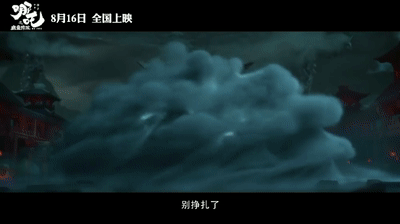
Its thoughtfulness lies in the expression and emphasis of its themes: “The prejudices in people’s hearts are mountains you can never move, no matter how hard you try,” “Today is my birthday banquet—not a single one of you is allowed to cry,” “My fate is mine to decide, not heaven’s. Whether demon or immortal, only I can define who I am”…
These lines alone, along with the bitterness and resolve they convey, are enough to prove the film’s depth and intensity.
04. Cool!
This aspect delivers an exceptionally potent emotional resonance—a uniquely immersive audiovisual experience afforded by animation’s distinctive art form.
The more utterly hopeless, reckless, and self-destructive it feels in the early stages, the more fiercely passionate, deeply loyal, and relentless it becomes in the latter half.

Paired with fluid, seamless motion and bold, sweeping action sequences, several shots in “Ne Zha” possess the potential to leave audiences in awe and their blood pumping.
Does this film have flaws?
Of course it does, though they don’t stand out too much within the film as a whole.
First, there are minor logical inconsistencies. For instance, it’s clear someone tampered with Ne Zha’s birth, yet Taiyi Zhenren never seems to investigate afterward. Everyone’s focus immediately shifts to the “demon child,” which feels odd.
Second, the portrayal of ordinary citizens embodying “preconceived notions” remains somewhat flat. Refining these conflicts would have made the viewing experience more satisfying.

Additionally, some of the film’s comedic moments and gags feel slightly out of control. For instance, crude humor involving bodily functions isn’t universally appealing.
Every audience member has their own yardstick for judging a work. Overall, Ne Zha delivers an outstanding performance. Even with these minor issues, they likely won’t detract much from its score.
Will there be a sequel?
Yes, it’s a done deal.
The first of the film’s two post-credits scenes depicts the dragons’ resentment and fury, hinting they may ally with suppressed deep-sea monsters to stir up trouble or orchestrate a conspiracy.

The second is a brief teaser for next year’s upcoming film “Legend of Deification”—which brings us to the studio behind it, Colorful Studio.
Founded in 2015 under Enlight Media, Colorful Studio has produced collaborations including “Monkey King: Hero is Back,” “Da Hai,” and “Dahufa.” Following these projects, Colorful Studio released the domestic animated “Mythology Trilogy”—comprising “Ne Zha,” “Legend of Deification,” and “The Monkey King: Hero is Back”—in November 2017. Hero is Back,” “Da Hai,” and “Dahufa,” CaiTiao House announced in November 2017 its production plan for the domestic animation “Mythology Trilogy”: “Ne Zha,” “Legend of Deification,” and “Phoenix.” Barring unforeseen circumstances, creating a reimagined animated “Chinese Mythology Universe” is also part of the plan.
Please specify:Anime Phone Cases » Ne Zha 哪吒之魔童降世 2019 Film Review: This year’s best domestic animated film has arrived.!